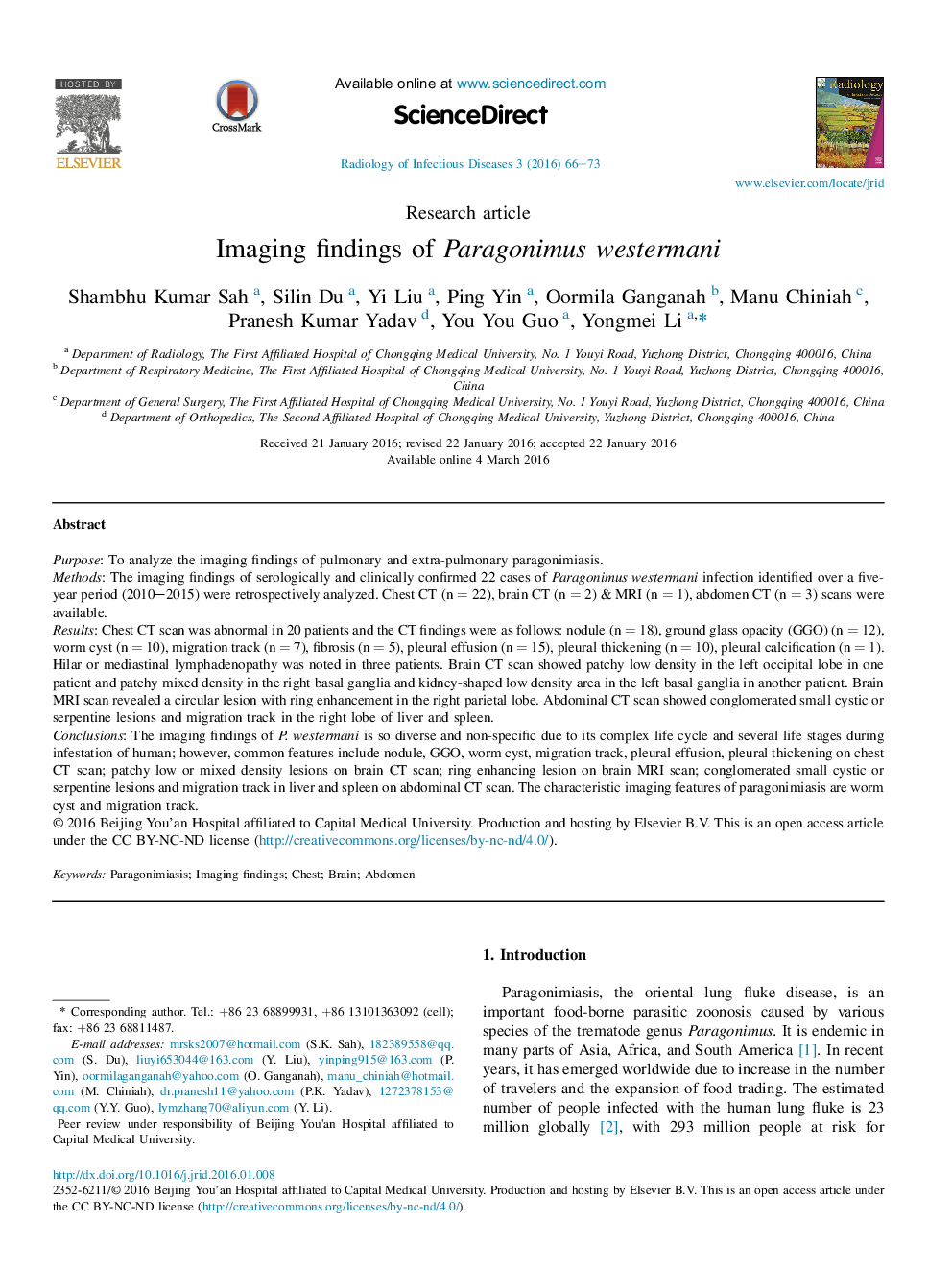| Article ID | Journal | Published Year | Pages | File Type |
|---|---|---|---|---|
| 878409 | Radiology of Infectious Diseases | 2016 | 8 Pages |
PurposeTo analyze the imaging findings of pulmonary and extra-pulmonary paragonimiasis.MethodsThe imaging findings of serologically and clinically confirmed 22 cases of Paragonimus westermani infection identified over a five-year period (2010–2015) were retrospectively analyzed. Chest CT (n = 22), brain CT (n = 2) & MRI (n = 1), abdomen CT (n = 3) scans were available.ResultsChest CT scan was abnormal in 20 patients and the CT findings were as follows: nodule (n = 18), ground glass opacity (GGO) (n = 12), worm cyst (n = 10), migration track (n = 7), fibrosis (n = 5), pleural effusion (n = 15), pleural thickening (n = 10), pleural calcification (n = 1). Hilar or mediastinal lymphadenopathy was noted in three patients. Brain CT scan showed patchy low density in the left occipital lobe in one patient and patchy mixed density in the right basal ganglia and kidney-shaped low density area in the left basal ganglia in another patient. Brain MRI scan revealed a circular lesion with ring enhancement in the right parietal lobe. Abdominal CT scan showed conglomerated small cystic or serpentine lesions and migration track in the right lobe of liver and spleen.ConclusionsThe imaging findings of P. westermani is so diverse and non-specific due to its complex life cycle and several life stages during infestation of human; however, common features include nodule, GGO, worm cyst, migration track, pleural effusion, pleural thickening on chest CT scan; patchy low or mixed density lesions on brain CT scan; ring enhancing lesion on brain MRI scan; conglomerated small cystic or serpentine lesions and migration track in liver and spleen on abdominal CT scan. The characteristic imaging features of paragonimiasis are worm cyst and migration track.
